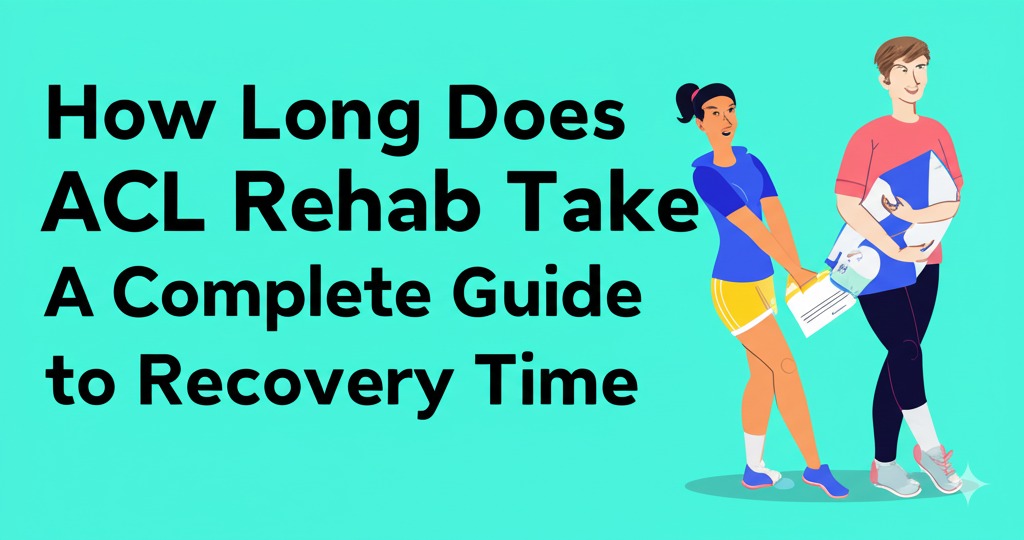Tearing your ACL (anterior cruciate ligament) can be a frustrating and painful experience—especially when you’re eager to get back to your active lifestyle. One of the most common questions people have after an ACL injury is: “How long does ACL rehab take?”
The answer depends on several factors, including the severity of the injury, the type of treatment, and how committed you are to the rehab process. In this guide, we’ll walk you through the different stages of ACL rehabilitation, typical recovery timelines, and tips to ensure a smooth, safe return to activity.
What Is the ACL and Why Is It Important?
The anterior cruciate ligament (ACL) is a crucial stabilizer in the knee joint. It connects the thigh bone (femur) to the shin bone (tibia) and helps control knee motion, especially during activities like:
- Running
- Jumping
- Pivoting
- Changing direction quickly
An ACL tear is a common injury among athletes, especially those in sports like soccer, basketball, and football. When the ACL is torn, it often requires surgery followed by a structured rehab program.
ACL Rehab Time: What to Expect
⏱️ Average ACL Rehab Timeline
For most people, ACL rehab after surgery takes about 6 to 9 months, but some individuals may take up to a year for a full recovery. Here’s a general timeline:
| Rehab Stage | Time Frame | Goals |
|---|---|---|
| Phase 1: Recovery & Protection | Weeks 1–3 | Reduce swelling, regain range of motion |
| Phase 2: Early Strengthening | Weeks 4–8 | Begin strengthening, improve balance |
| Phase 3: Advanced Strengthening | Months 2–4 | Increase intensity, build muscle control |
| Phase 4: Return to Sport-Specific Training | Months 4–6 | Improve agility, coordination |
| Phase 5: Return to Sport | Months 6+ | Resume full activity, prevent re-injury |
🔑 Key takeaway: Rushing rehab can lead to re-injury. Patience and consistency are crucial.
Key Factors That Influence ACL Rehab Time
Not everyone heals at the same rate. Here are some factors that impact recovery time:
1. Severity of the Injury
- Partial ACL tears may not require surgery and can heal faster with physical therapy.
- Complete tears typically need reconstructive surgery and longer rehab.
2. Type of Surgery Performed
- Autografts (using your own tissue) may heal faster.
- Allografts (donor tissue) may take longer but are less invasive.
3. Age and Fitness Level
- Younger, active individuals often recover more quickly.
- Older adults or those with low fitness levels may need extra time.
4. Commitment to Rehab
- Skipping physical therapy sessions or not following home exercise plans can delay recovery.
Phases of ACL Rehabilitation
🩺 Phase 1: Early Recovery (Weeks 1–3)
Goals:
- Minimize swelling and pain
- Regain range of motion (especially full knee extension)
- Begin gentle exercises like quad sets and heel slides
Tips:
- Use ice and compression
- Elevate your leg often
- Follow your physical therapist’s guidance closely
💪 Phase 2: Strength & Stability (Weeks 4–8)
Goals:
- Improve leg strength and balance
- Restore normal walking pattern
Exercises may include:
- Bodyweight squats
- Stationary bike
- Balance board work
Pro Tip: Start incorporating light activity, but avoid high-impact moves.
🔁 Phase 3: Functional Training (Months 2–4)
Goals:
- Build muscular endurance
- Improve neuromuscular control
Expect:
- Resistance training
- Single-leg exercises
- Light agility drills
🏃 Phase 4: Return to Activity (Months 4–6)
Goals:
- Improve sports-specific movement
- Regain confidence in the knee
Includes:
- Plyometric training
- Jumping, cutting, and pivot drills
- Sport simulations
🎯 Phase 5: Full Return to Sport (Month 6 and Beyond)
Criteria:
- Symmetrical strength
- Full range of motion
- Passing functional tests (e.g., hop tests)
Most athletes are cleared around the 9-month mark, but it depends on your sport and progress.
Tips for a Successful ACL Recovery
✅ Stick to your rehab plan – Consistency is the key to success
✅ Set realistic goals – Progress may feel slow, but steady improvement matters
✅ Fuel your recovery – Eat a nutrient-rich diet to support tissue healing
✅ Listen to your body – Pain is your body’s way of telling you to ease up
✅ Work with a certified physical therapist – Personalized plans make a difference
When to Contact Your Doctor or Therapist
Reach out to your healthcare provider if you experience:
- Sharp or worsening knee pain
- Signs of infection (redness, fever, discharge)
- Instability or buckling of the knee
- Swelling that doesn’t improve with rest
Prompt attention can prevent complications and keep you on track.
Final Thoughts: Patience Pays Off in ACL Rehab
Recovering from an ACL injury isn’t easy—but it is possible with the right mindset, a structured rehab plan, and support from your care team. Remember, rushing the process can increase your risk of re-injury, so give your body the time it needs to heal fully.
Whether you’re an athlete aiming to get back on the field or simply want to return to everyday activities without pain, dedication and consistency in your rehab routine will make all the difference.

Kallie Snyder is an author at Stonegate Health Rehab, providing valuable insights, recovery guidance, and rehab resources to help individuals achieve better health and well-being.
